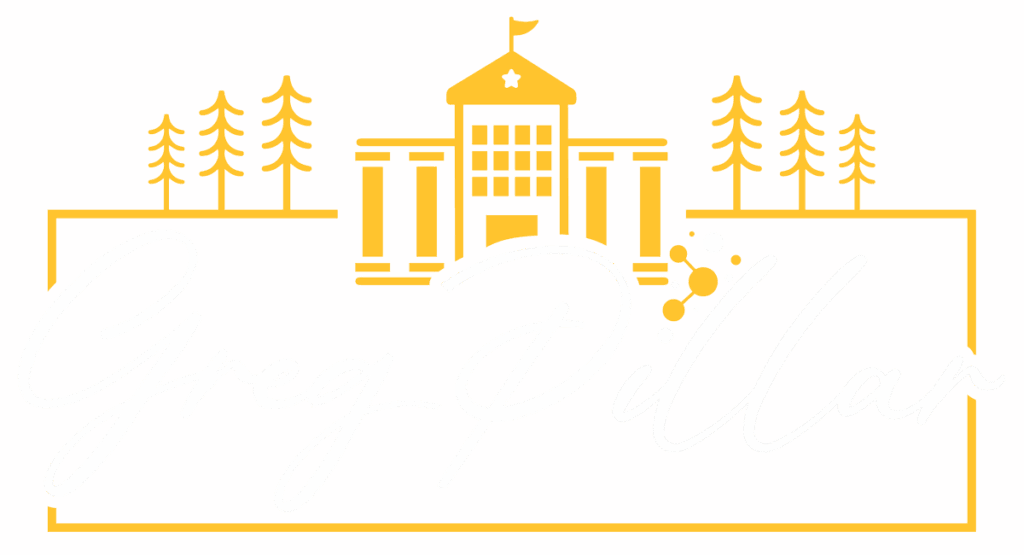Celebrating Resilience in Scholarship at Smaller Institutions
gregpillar
on
January 9, 2025
After nearly two decades in higher education and in day 4 of my first career change in 18 ½ years, I find myself reflecting this week on the unique challenges and extraordinary rewards of working in this field. My journey has taken me from the classroom as a faculty member to various administrative roles, providing a broad perspective on the dynamics of teaching, research, and institutional support. My career is rooted in my discipline and is fundamental to my identity, which is environmental chemistry, but I’ve had the privilege of teaching across geology, environmental science, and chemistry, often integrating research into undergraduate courses and mentoring students through meaningful scholarly projects.
For example, I embedded a project where students measured levels of BPA and BPS from thermal paper used in cash register receipts in an analytical chemistry course. In another project in the same course, we measured levels of metals from the surfaces of toy cars, and in one other project in an environmental science course, we developed a method to analyze soil in the highway median for common car pollutants/contaminants. This dual focus on teaching and research, particularly in settings with limited resources, has offered invaluable insights into the resilience and creativity required to meet scholarship expectations in the sciences. By sciences, I am including the natural, physical, health, and social sciences and specifically referring to smaller institutions. Additionally, I am focusing on institutions that, although they may have some graduate programs—even doctoral programs—they are limited, and thus most faculty have to either rely on conducting independent research or research with undergraduate students. This isn’t easy as undergraduate students are less experienced, require more guidance, and thus are more likely to make more mistakes, costing more resources, time, and money to complete the work necessary to produce publishable results. However, just because results may not be “publish quality” doesn’t mean that learning hasn’t occurred or that learning outcomes haven’t been met. Thus, these challenges provide a unique opportunity to help students address academic gaps or deficiencies, equipping them with the skills needed for future success.
Innovation Through Scarcity: The Strength of Smaller Institutions
One of the defining characteristics of smaller institutions is the ability to thrive despite resource constraints. Faculty members often carry heavy teaching loads, making it challenging to dedicate significant time to conduct research. These pressures are compounded when institutions expect faculty to produce scholarly work for tenure, promotion, or annual performance reviews. Unlike larger universities with graduate students who bring advanced skills to research projects and can perform much of the “leg work,” faculty at smaller institutions frequently mentor undergraduates who are just beginning to explore scholarly work. Thus, it requires more work to mentor them or the faculty have to do a lot of it themselves. Yet, these challenges cultivate a unique environment where innovation flourishes.
In my experience, faculty at smaller institutions excel at integrating research into their courses and creating opportunities for summer research programs. These efforts provide students with hands-on experience that goes beyond the traditional classroom setting. The research posters that line the hallways of science buildings at these institutions tell stories of ambitious and high-quality projects that rival those at larger research universities. They reflect not only the dedication of the faculty but also the determination and potential of the students. In many cases, the students have much more ownership of the work than students at larger institutions who may have simply done smaller portions of the work.
It should be noted that often, faculty can score SoTL publications. SoTL, or Scholarship of Teaching and Learning, is scholarship focused not necessarily in their discipline but in or on teaching. Often (though not always), smaller schools will accept SoTL scholarship towards tenure and promotion, and faculty should jump on those opportunities. However, institutions should understand that faculty should still be afforded time to complete some disciplinary scholarship. Just because the institution accepts SoTL work doesn’t mean their tenure portfolio should only consist of it. I think faculty should have a healthy balance of disciplinary scholarship and SoTL scholarship. Although SoTL scholarship may not require the time or financial resources as the disciplinary scholarship requires, institutions should still work to try to provide or support the faculty in obtaining the financial resources (and time) to support the disciplinary scholarship.
Addressing Learning Gaps Through Research Opportunities
Lately, there has been growing concern that high school students are entering college less prepared than in previous years. Only 21% of the class of 2023—a group that started high school during the first year of the pandemic—was ready to succeed in core college-level courses, according to ACT data (Manno, 2024). This decline in college readiness is compounded by years of high school instruction that emphasizes standardized test performance over critical thinking, communication, and problem-solving skills (Manno, 2024). Additionally, the rise of remedial coursework in college highlights the disconnect between high school preparation and postsecondary success, with over six in ten first-year college undergraduates taking remedial courses in math or reading (Newton, 2024).
Smaller institutions, with their focus on personalized education and mentorship, are uniquely positioned to address these gaps. Faculty can use research opportunities—whether embedded in courses, part of summer programs, or featured in capstone experiences—to help students develop critical skills that bridge these deficiencies. Through these hands-on experiences, students are not only exposed to content knowledge but also encouraged to think critically, communicate effectively, and solve real-world problems. As Busteed (2024) notes, integrating real-world work into the academic curriculum can make education more engaging and relevant for students, fostering both academic growth and career readiness.
These opportunities also build soft skills, such as professionalism, organization, and resilience, which many employers find lacking in recent graduates (Greene, 2024). For students who lack initiative or motivation, tailored interventions and additional support can help them develop these traits over time. The transformative power of these experiences is undeniable, equipping students with the problem-solving and critical thinking skills necessary to thrive in their post-graduate endeavors.
The Transformative Power of Undergraduate Research
Undergraduate research is a transformative experience for students, offering them a glimpse into the world of inquiry and discovery. It can really ignite a passion for curiosity and life-long learning. Even when the outcomes of a research project do not result in publishable data, the process itself is invaluable. Engaging in research teaches students how to approach problems methodically, analyze results critically, and adapt when experiments do not go as planned. These lessons are foundational and mirror the realities of professional work, where not every effort leads to immediate success, but every effort contributes to growth.
For many students, the skills developed through research are far more significant than the final outcome. These include technical abilities like data analysis, lab techniques, or fieldwork methodologies, as well as transferable skills such as resilience, time management, and collaborative teamwork. Even when projects fail to yield publishable results, the learning outcomes often surpass those achieved in traditional classroom settings.
Additionally, such experiences help students develop grit and problem-solving abilities. They learn how to troubleshoot setbacks, iterate on ideas, and persevere in the face of challenges—qualities that are highly sought after in graduate school and the workforce. Research also provides opportunities for students to engage in meaningful mentorships with faculty, building relationships that enhance their confidence and professional development.
The tough part is that when the outcome does not result in publishable results, the faculty member may still need something to use for the purpose of tenure and/or promotion. This is where turning the work into a SoTL project can be helpful and/or into an artifact that the institution may accept, such as a peer-reviewed presentation or other publication in a trade journal or a methods article. This can be a fine line between what meets and doesn’t meet scholarship/creativity standards.
In fact, one of the most significant benefits of undergraduate research is the opportunity it gives students to reflect on and refine their goals. The process helps students discover what excites them about their field, as well as areas they may want to avoid. This self-awareness is invaluable as they make decisions about their careers or graduate studies. Therefore, even in the absence of publishable outcomes, the experience of engaging in research provides substantial, long-lasting benefits that prepare students for future success.
Expanding the Conversation: Institutional Challenges and Opportunities
While the achievements of students and faculty are worth celebrating, it’s important to acknowledge the structural challenges that many institutions face. Limited financial resources, aging facilities, and a lack of adequate staffing are common hurdles, even for institutions with a strong commitment to academic excellence. These challenges often force faculty to work under immense pressure, balancing heavy teaching loads, research expectations, and service commitments. However, these same challenges can also serve as catalysts for innovation, collaboration, and advocacy when approached strategically.
Financial Strategies
Institutions can explore creative solutions to overcome financial barriers. For example:
- Building Cross-Institutional Collaborations: Partnering with nearby colleges, universities, or research centers to share facilities and expertise can expand research capabilities without requiring significant capital investment.
- Engaging Alumni Networks and Private Donors: Leveraging alumni relationships to fundraise for specific programs or facilities can bring targeted resources to underfunded areas.
- Pursuing Grant Opportunities: Developing dedicated grant-writing offices or training faculty in grant writing can help institutions secure external funding for research, facilities, and academic programming.
Modernizing Infrastructure
Aging facilities not only hinder research and teaching but can also impact the recruitment of both students and faculty. Institutions should prioritize:
- Flexible Learning Spaces: Investing in multi-use spaces that accommodate research, teaching, and community engagement activities.
- Sustainable Upgrades: Partnering with environmental organizations to modernize facilities in ways that improve energy efficiency and reduce costs.
- Digital Infrastructure: Enhancing IT systems and providing cutting-edge software tools to support research and virtual collaborations.
Advocating for Faculty and Student Support
Advocacy is critical for creating policies that address institutional challenges:
- Workload Equity: Faculty workload policies should better reflect the demands of balancing teaching, research, and service. Institutions should explore course release programs or time allocations for faculty engaged in research. This can be really challenging and both faculty and administrators need to understand the give and take that needs to come with this work. Additionally, faculty need to understand that there may be some disciplinary differences that make true equity across the entire faculty difficult. The key goal is transparency and providing, to the degree possible, time and financial support to faculty for scholarship and creative work. Emphasis should be placed on scholarship and creative work that includes undergraduate students and achieves specific student learning outcomes.
- Research Mentorship Programs: Pairing early-career faculty with successful faculty who have balanced SoTL with disciplinary scholarship and course-embedded scholarship can accelerate their success.
- Student-Centered Funding: Allocating funds for student stipends, travel grants, and project supplies can enhance access to research opportunities, particularly for students from underrepresented backgrounds.
Transparency in Research Opportunities
Students and families are often unaware of the rich research opportunities available at smaller institutions. To attract students who value hands-on mentorship, institutions should:
- Showcase Success Stories: Publicize examples of undergraduate research projects, graduate school acceptances, and post-graduation employment outcomes.
- Streamline Access to Research: Develop centralized databases or platforms where students can easily find available research opportunities, faculty mentors, and funding options.
- Engage the Community: Host research symposiums, open houses, or public exhibitions to celebrate faculty and student achievements.
Leveraging Institutional Strengths
Smaller institutions can position themselves as leaders in areas such as personalized education, interdisciplinary research, and community engagement. By doubling down on these strengths, institutions can not only overcome challenges but also distinguish themselves in the competitive landscape of higher education.
Lessons Learned in Higher Education
Reflecting on my time in higher education, I am struck by the resilience and adaptability of the communities I’ve been a part of. Faculty members find creative ways to balance teaching, research, and service, often going above and beyond to support their students. Students, in turn, rise to the challenge, demonstrating grit and determination as they pursue their goals. This reciprocal relationship between faculty and students is a cornerstone of the success seen in smaller institutions.
Celebrating Success in Unique Ways
These experiences have also highlighted the importance of celebrating success in ways that resonate with smaller institutions’ missions and values. While larger, better-resourced universities may garner national recognition, smaller institutions excel at creating environments where individual accomplishments are recognized and deeply felt. For example:
- Showcasing Individual Contributions: Institutions can regularly spotlight the achievements of students and faculty through their websites, social media, newsletters, awards, or dedicated events.
- Institutional Traditions: Building traditions that celebrate research and teaching excellence can instill a sense of pride and continuity within the campus community.
- Alumni Engagement: Sharing the post-graduate success stories of alumni can serve as a source of inspiration for current students and reinforce the impact of the institution’s mission.
The Value of Intentional Mentorship
One of the most critical lessons learned is the power of intentional mentorship. At smaller institutions, where relationships between faculty and students often flourish, personalized guidance has consistently helped students overcome challenges, refine their goals, and develop confidence. This mentorship often extends beyond academics, helping students navigate personal challenges, develop professional networks, and identify long-term career aspirations. For faculty, this kind of mentorship also strengthens their sense of purpose and reinforces the value of their work.
Institutions that foster a culture of mentorship can see significant outcomes, such as:
- Improved Retention and Graduation Rates: Students who feel supported are more likely to persist through challenges and complete their degrees.
- Career-Readiness: Students who work closely with mentors are better prepared to enter the workforce or pursue graduate studies, often with a clearer sense of direction.
- Expanded Research Opportunities: Faculty mentors who involve students in their research not only advance their own scholarship but also provide students with transformative, hands-on learning experiences.
Fostering Resilience in Students
A unique strength of smaller institutions is their ability to help students cultivate resilience. Many students arrive with academic gaps or personal obstacles, but through intentional support systems, they leave equipped to handle the complexities of the professional world. Institutions that emphasize adaptability and problem-solving in their teaching and mentorship help students:
- Build Confidence: Overcoming initial setbacks in research or coursework builds perseverance and self-efficacy.
- Navigate Uncertainty: Students develop the ability to manage ambiguity and tackle open-ended challenges—skills highly valued in today’s workforce.
- Engage Holistically: By integrating personal, academic, and professional development, students leave with a well-rounded sense of achievement.
Opportunities for Faculty Growth
While mentorship benefits students, it also enriches the experiences of faculty. Through their mentoring relationships, faculty develop their ability to communicate complex ideas, refine their teaching practices, and gain personal fulfillment from helping students succeed. Institutions that support faculty mentorship with professional development opportunities, workload accommodations, or recognition programs create a virtuous cycle that benefits the entire campus.
Lessons on Equity and Inclusion
Smaller institutions also offer unique opportunities to address equity and inclusion. By creating programs that prioritize access to research opportunities, institutions can ensure that historically underrepresented students gain the skills and confidence needed to excel. Lessons learned here include:
- Proactive Outreach: Intentional efforts to engage underrepresented students in mentorship and research create a more equitable academic environment.
- Cultural Competency Training: Supporting faculty in understanding the diverse experiences of their students enhances the quality of mentorship and teaching.
- Inclusive Pedagogy: Incorporating diverse perspectives into research and curriculum ensures that all students see themselves reflected in their academic journey.
Building a Legacy of Impact
Smaller institutions may not have the financial resources or scale of larger universities, but they excel at fostering individual growth, building meaningful relationships, and producing graduates who go on to make a difference in the world. This legacy of impact is something to be celebrated and continuously built upon. By reflecting on these lessons, institutions can refine their approaches to teaching, mentorship, and community engagement, ensuring that their contributions remain significant and far-reaching.
Looking Ahead
As I continue my journey in higher education, I am more committed than ever to advocating for the recognition and support of institutions that foster resilience and innovation. The challenges they face are real, but so are the opportunities. By celebrating their successes and addressing their needs, we can ensure that they continue to play a vital role in shaping the future of education.
Looking ahead, institutions must focus on several critical areas to remain relevant and impactful in a rapidly changing educational landscape. Among these are aligning student outcomes with workforce needs, providing equitable access to high-impact educational practices, and building sustainable models for growth. Smaller institutions, in particular, have the potential to excel in these areas by leveraging their intimate campus environments, close-knit communities, and ability to innovate in teaching and research.
Aligning Education with Workforce Needs
The landscape of higher education and employment is shifting rapidly, with employers increasingly seeking graduates who possess not only technical skills but also critical thinking, adaptability, and emotional intelligence. Smaller institutions are well-positioned to meet this demand by:
- Embedding Experiential Learning in Curricula: Expanding opportunities for internships, co-op programs, and research projects that connect academic theory with real-world applications.
- Building Stronger Industry Partnerships: Collaborating with local and regional businesses to ensure that students gain hands-on experience and develop skills directly aligned with workforce needs.
- Fostering Lifelong Learning: Creating pathways for alumni to return for upskilling and reskilling programs as industries evolve.
Equitable Access to High-Impact Practices
Equity in education must remain a priority as institutions look to the future. High-impact practices such as undergraduate research, study abroad programs, and community-based learning must be made accessible to all students, regardless of their financial or social backgrounds. Institutions can:
- Expand Financial Support for Research: Offering stipends and grants to ensure that students from underrepresented backgrounds can participate in research opportunities without financial hardship.
- Promote Inclusive Pedagogies: Encouraging faculty to incorporate diverse perspectives and inclusive practices into their teaching and mentoring.
- Prioritize First-Generation and Nontraditional Students: Developing targeted programs that address the unique challenges these students face and ensure their success.
Building Sustainable Models for Growth
The future of higher education depends on creating sustainable models that balance growth with institutional stability. Smaller institutions, often operating with limited resources, must focus on:
- Investing in Technology: Adopting tools that streamline administrative processes, enhance teaching, and expand access to online and hybrid learning opportunities.
- Strengthening Alumni Engagement: Leveraging alumni networks not only for fundraising but also as mentors, internship providers, and advocates for the institution.
- Diversifying Revenue Streams: Pursuing new revenue opportunities such as certificate programs, executive education, and community partnerships to reduce dependency on tuition.
Leading Through Interdisciplinary Approaches
The growing need for interdisciplinary approaches presents a unique opportunity for smaller institutions to lead. By fostering collaboration across departments and breaking down traditional academic silos, they can prepare students to tackle complex, real-world problems with creativity and innovation. For example:
- Interdisciplinary Research Centers: Creating hubs where faculty and students from diverse disciplines can collaborate on pressing societal issues, such as climate change or public health.
- Problem-Based Learning Models: Structuring curricula around real-world challenges that require students to integrate knowledge from multiple fields.
- Encouraging Cross-Departmental Teaching: Facilitating team-taught courses that bring together faculty from different disciplines to provide students with a broader perspective.
Leveraging Institutional Strengths
Smaller institutions have inherent strengths, such as close faculty-student relationships, flexible academic structures, and strong ties to their communities. Looking ahead, these strengths can be leveraged to:
- Develop Regional Partnerships: Working with local governments, nonprofits, and businesses to address regional challenges while providing students with experiential learning opportunities.
- Enhance Community Impact: Strengthening the institution’s role as a cultural and intellectual hub through events, workshops, and outreach initiatives.
- Amplify Storytelling: Sharing compelling narratives about student success, faculty achievements, and community engagement to build a strong institutional identity.
Adapting to the Future of Work
The rise of automation, artificial intelligence, and a rapidly evolving global economy underscores the importance of preparing students for an unpredictable future. Smaller institutions can adapt by:
- Focusing on Human Skills: Developing curricula that emphasize creativity, emotional intelligence, and collaboration—skills less likely to be automated.
- Incorporating Emerging Technologies: Offering courses and research opportunities in areas such as AI, data science, and cybersecurity to prepare students for high-demand fields.
- Teaching Adaptability: Encouraging students to embrace lifelong learning and view education as a continuous process.
Higher education is not a monolith; it’s a tapestry of diverse institutions, each with its own strengths and challenges. The resilience and creativity I’ve witnessed throughout my career remind me of the transformative power of education and the importance of investing in its future. By focusing on these key areas and embracing a culture of innovation and inclusivity, smaller institutions can not only survive but thrive in the evolving landscape of higher education.
Final Thoughts
Smaller institutions hold a unique and vital place in the landscape of higher education, serving as hubs of resilience, creativity, and transformative learning. These institutions thrive on their ability to nurture close-knit communities, foster personalized mentorship, and provide opportunities for both students and faculty to achieve meaningful success. However, the path is not without its challenges—for students or faculty.
Faculty at smaller institutions often face a delicate balancing act. Heavy teaching loads, research expectations, and service commitments create a demanding environment, further compounded by the expectations of tenure and promotion. Unlike larger institutions with graduate students who contribute advanced skills to research, faculty at smaller institutions must guide undergraduate students who are just beginning their scholarly journeys. Research projects may not always result in publishable outcomes, yet they represent significant learning experiences for students and require considerable effort and ingenuity from faculty. Institutions must recognize this and embrace a more expansive view of scholarship. Peer-reviewed presentations, methods articles, trade publications, and SoTL work are critical contributions that deserve to be valued in tenure and promotion processes.
For students, these challenges translate into unparalleled opportunities. Undergraduate research at smaller institutions is transformative, teaching students how to navigate complexities, overcome setbacks, and refine their problem-solving skills. These experiences demand grit, resilience, and a commitment to excellence, often pushing students beyond what they thought possible. The mentorship they receive from faculty—who themselves are navigating significant professional challenges—further equips them with the confidence, adaptability, and technical expertise they need to excel in graduate school, professional programs, or the workforce.
This reciprocal relationship between faculty and students lies at the heart of smaller institutions’ success. Faculty invest in students’ growth through intensive mentorship and innovative teaching, even as they work to meet their own professional goals. In return, students rise to the challenge, demonstrating that rigorous academic and research experiences at smaller institutions can rival those found at larger, better-resourced universities. Together, they create a culture of resilience and achievement that is both inspiring and impactful.
Ultimately, the legacy of smaller institutions is built on this dual commitment to faculty and students. By addressing the structural challenges that faculty face, celebrating diverse forms of scholarship, and continuing to provide students with rigorous, transformative research opportunities, these institutions ensure their continued relevance and impact. They may not always dominate national headlines, but their influence is profound, shaping lives, advancing knowledge, and preparing students and faculty alike to thrive in an ever-changing world. It is this quiet but enduring legacy that makes smaller institutions a cornerstone of higher education’s future.
References
Busteed, B. (2024, February 21). The growing discontent with American education. Forbes. Retrieved from https://www.forbes.com/sites/brandonbusteed/2024/02/21/the-growing-discontent-with-american-education/
Greene, P. (2024, October 2). Neither college nor career ready. Forbes. Retrieved from https://www.forbes.com/sites/petergreene/2024/10/02/neither-college-nor-career-ready/
Manno, B. V. (2024, May 28). Are high school graduates ready for college? Forbes. Retrieved from https://www.forbes.com/sites/brunomanno/2024/05/28/are-high-school-graduates-ready-for-college/
Newton, D. (2024, December 29). Five education predictions for 2025. Forbes. Retrieved from https://www.forbes.com/sites/dereknewton/2024/12/29/five-education-predictions-for-2025/





